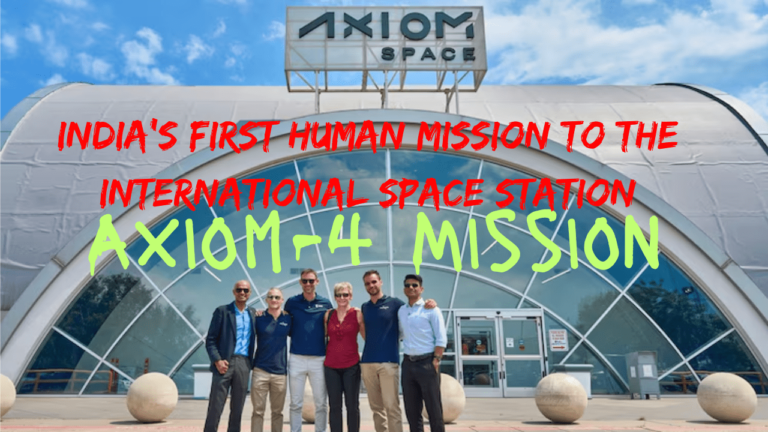World’s First Private Spacewalk Marks New Era in Space Exploration
On September 12, 2024, a major milestone in space exploration was achieved when two astronauts aboard the SpaceX Crew Dragon capsule successfully completed the world’s first private spacewalk. This event, part of the Polaris Dawn mission, has not only pushed the boundaries of commercial spaceflight but also showcased the potential for future private space exploration endeavors.
Key Mission Highlights at a Glance
| Event | Details |
|---|---|
| Spacewalk Date | September 12, 2024 |
| Mission Name | Polaris Dawn |
| Spacewalk Duration | Initially planned for 30 minutes, extended to 1 hour 46 minutes |
| Participants | Jared Isaacman (Commander), Sarah Gillis (SpaceX Engineer) |
| Other Crew Members | Scott Poteet, Anna Menon |
| Launch Date | September 10, 2024 |
| Spacecraft | SpaceX Crew Dragon |
| Objective | Test new spacesuit designs and spacewalk protocols, prepare for future commercial space missions |
The Spacewalk: A First for Private Spaceflight
Two astronauts, billionaire Jared Isaacman and SpaceX engineer Sarah Gillis, made history by becoming the first private individuals to perform an extravehicular activity (EVA), commonly known as a spacewalk. Tethered to the Crew Dragon spacecraft, they conducted this spacewalk while their fellow crew members—Scott Poteet and Anna Menon—observed from inside the spacecraft.
The spacewalk, initially scheduled for 30 minutes, was extended to 1 hour and 46 minutes due to the complexity of pre-spacewalk checks and additional safety procedures. It was streamed live on SpaceX’s website, allowing people from around the world to witness this historic moment in real time.
Safety Protocols and Spacesuit Innovation
For this spacewalk, the Crew Dragon capsule was fully depressurized, ensuring that the astronauts were completely reliant on the life-support systems built into their SpaceX-developed spacesuits. These suits are designed to provide oxygen via an umbilical connection, a crucial feature for ensuring astronaut safety in the harsh environment of space.
The Polaris Dawn mission used this spacewalk as an opportunity to test new spacesuit designs and safety protocols, which will help lay the groundwork for future private spaceflights and eventual space tourism.
| Spacesuit Features | Description |
|---|---|
| Oxygen Supply | Provided through an umbilical connection |
| Design | Tested for long-duration spacewalk capability, new material for flexibility |
| Safety Measures | Integrated with Crew Dragon’s systems, advanced life-support controls |
| Mission Objective | To evaluate suit performance in a real-world spacewalk scenario |
Polaris Dawn Mission: Pioneering the Future of Commercial Spaceflight
Launched from Florida on September 10, 2024, the Polaris Dawn mission is an important step in advancing commercial spaceflight. The mission is funded by Jared Isaacman, who also financed SpaceX’s Inspiration4 mission in 2021, marking a significant push toward creating a future where space travel is accessible to private citizens.
Mission Goals and Technological Advancements
The Polaris Dawn mission’s key objectives include:
- Testing Spacesuit Designs: Evaluating the effectiveness of new spacesuits in spacewalk conditions.
- Orbital Research: Conducting various scientific experiments in microgravity.
- Advanced Communication Systems: Testing laser-based communication technologies that could enhance Earth-to-space and space-to-space communication in future missions.
- Spacewalk Protocol Development: Laying the foundation for standardized protocols for private spacewalks, with an eye toward deep-space missions and space tourism.
| Objective | Details |
|---|---|
| Spacesuit Testing | Designed to handle long-duration spacewalks with enhanced mobility |
| Communication Systems | Focus on laser communications to improve efficiency in data transmission |
| Scientific Research | Microgravity experiments in biological and physical sciences |
| Protocol Development | Building standardized safety protocols for private spacewalks |
Impact on Commercial Spaceflight
The private spacewalk conducted as part of the Polaris Dawn mission marks a significant achievement for SpaceX and the broader commercial space industry. This spacewalk signals that private companies are not only capable of sending non-governmental astronauts into space but can also perform complex activities such as extravehicular activities (EVAs) without the direct involvement of governmental space agencies.
With SpaceX’s ambitions to eventually reach Mars, the success of the Polaris Dawn spacewalk brings the company one step closer to its goal of enabling regular human space exploration beyond Earth. Moreover, this mission highlights the growing role of private finance in space exploration, with Jared Isaacman investing hundreds of millions of dollars to make this mission possible.
The Future of Spacewalks in Commercial Space Exploration
With the success of the Polaris Dawn mission, private spacewalks will likely become a more common feature in future spaceflights, especially as space tourism becomes more viable. SpaceX, with its Crew Dragon spacecraft and advanced spacesuits, is positioning itself as a leader in the field.
As companies like Blue Origin and Virgin Galactic continue to develop their own space tourism models, the bar for private space exploration will keep rising, leading to more advanced missions that could one day include stays at private space stations, moon landings, and even trips to Mars.
| Upcoming Space Developments | Details |
|---|---|
| Space Tourism | Companies like SpaceX and Blue Origin are investing heavily in making space travel accessible |
| Private Space Stations | Ambitions to build commercially-run space stations for research and tourism |
| Mars Missions | SpaceX’s long-term goal is to enable human settlement on Mars |
| New Rocket Technologies | Reusable rockets and next-gen propulsion systems are making space travel more affordable |
Conclusion: A New Dawn for Space Exploration
The Polaris Dawn mission and its successful private spacewalk demonstrate the rapid advancements being made in commercial space exploration. This mission is a testament to the growing capabilities of private space companies like SpaceX and their commitment to pushing the boundaries of what is possible in space travel.
As the space race shifts from government-led efforts to private sector innovation, events like this spacewalk will continue to inspire the next generation of astronauts and space entrepreneurs, paving the way for a future where space is within reach for everyone.
By incorporating cutting-edge technologies and innovative spacesuit designs, SpaceX is leading the charge in making space exploration more accessible, while also setting the stage for future missions to the Moon, Mars, and beyond.







